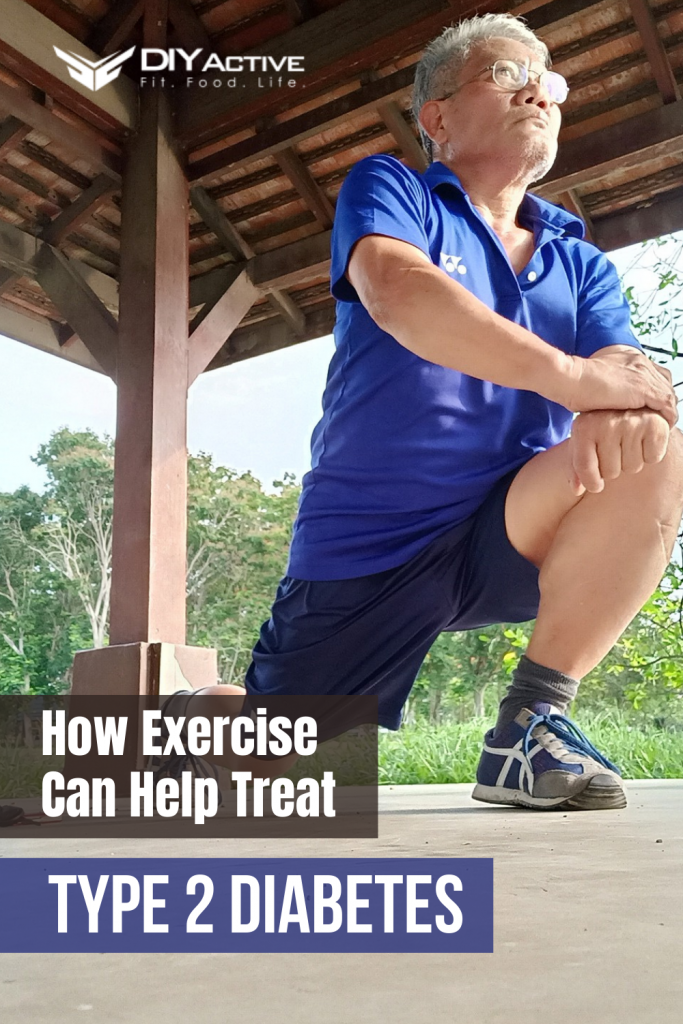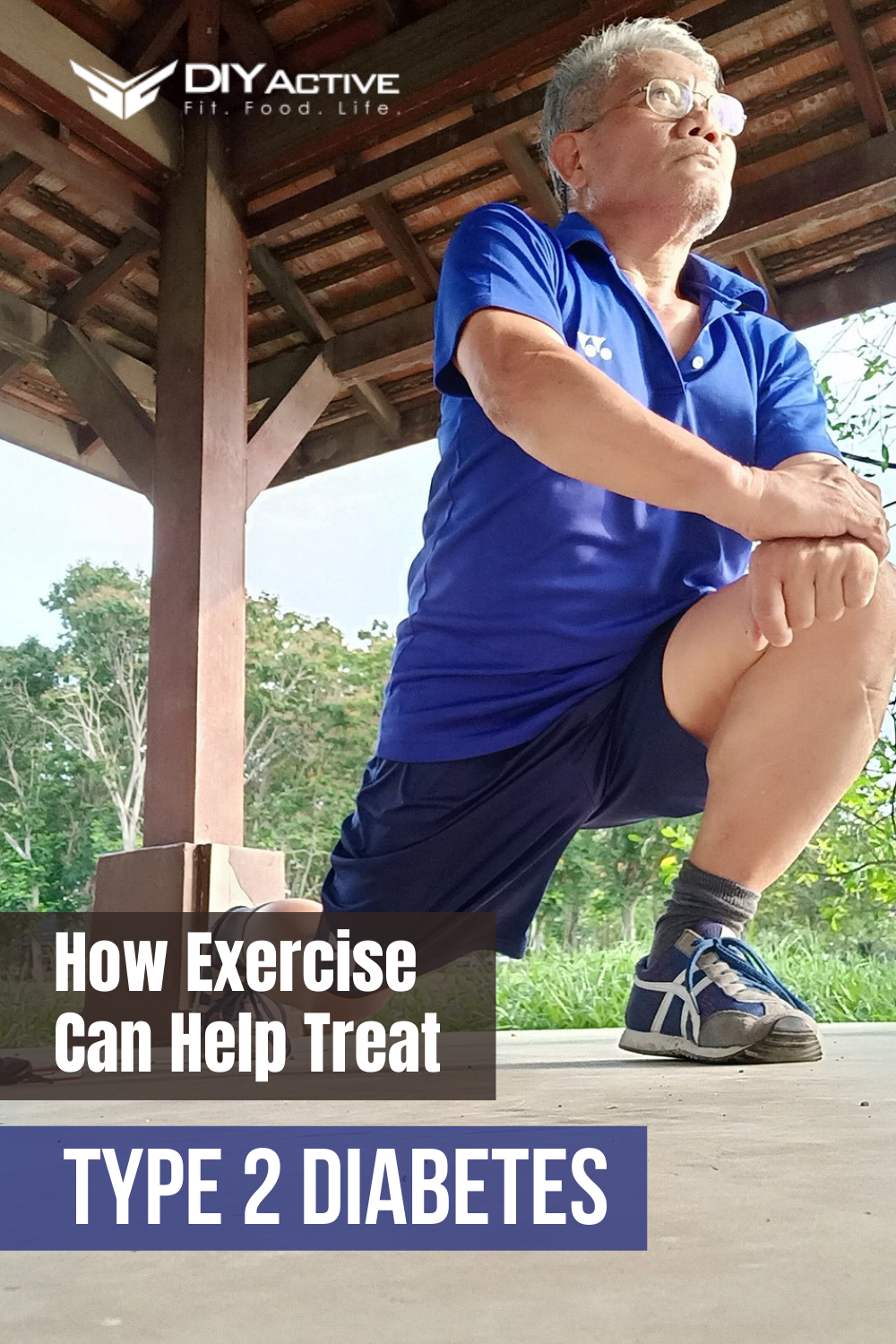Products You May Like
Physical activity and exercise play a crucial role in not only preventing Type 2 diabetes but also managing it for those who already have it. This is due to several effects that exercise has on our bodies. If executed correctly, these effects can do wonders in helping people manage their blood glucose.
Today, we will try to explore how exercise contributes to treating and preventing Type 2 diabetes.
Does Exercise Help With Type 2 Diabetes?
In March 2020, a review published by the National Institute of Health concluded that Type 2 diabetes patients could cut down oral medicines and insulin intake if they exercise and engage in physical activity. Another study by NIH showed that exercise could materialize excellent insulin management, besides helping with glycemic control, blood lipids, and insulin signaling.
Furthermore, according to data analyzed by StuffThatWorks, a crowdsourced platform specializing in treatment effectiveness, exercise is the fourth most commonly tried treatment for Type 2 diabetes and proved effective to varying degrees for most of the patients who tried it.
How Does Exercise Affect Type 2 Diabetes?
Let us see what changes exercise brings to one’s body to get these amazing results!
The coordination between endocrine systems and sympathetic nerves is responsible for the upkeep of normal blood glucose levels at rest and during physical activity. Although blood glucose production and maintenance are handled by the liver, contracting muscles increase the uptake of blood glucose.
According to multiple credible sources, this “exercise fuel” is impacted by several factors, the most important of which are the duration and intensity of the physical activity.
Effects of Exercise on Type 2 Diabetics
As discussed earlier, physical activity and exercise drastically affect a patient’s Type 2 diabetes condition. Furthermore, they have been confidently disclosed as great strategies for managing insulin levels and preventing pre-diabetes.
Here is how exercise helps Type 2 diabetes patients.
Muscle Energy Consumption
An overlooked phenomenon of the body is that muscles consume a lot of energy and glucose. Precisely, about 70-80% of the energy we obtain from a meal goes to our muscles.
However, if a person’s muscle mass is too small, it won’t intake the proper amount of blood glucose, therefore, making them unable to clear it from their bloodstream. This leads to unhealthy blood glucose levels in the blood and therefore provides fertile ground for Type 2 diabetes.
To fight against this, doctors advise patients to try to create more muscle mass, exercising frequently, and engaging in physical activity. As one gets older, a greater muscle mass provides more insulin receptors and hence doesn’t allow glucose imbalances in the bloodstream.
Increased Blood Glucose Levels
Studies have shown that exercise leads to increased blood sugar levels and, eventually, a higher takeup of glucose by organs and working muscles. To put it another way, exercise results in the consumption of elevated glucose levels, which are spent healthily instead of staying in your bloodstream and causing dangerous imbalances.
This is also why doctors advise patients to take walks after meals, so their energy intake can be put to good use through active physical exertion.
Weight Loss
 John Hopkins Medicine has concluded that Type 2 diabetes patients can significantly reduce their A1C (2-3 month average of one’s blood sugar levels) by losing only 5-10% of their total body weight.
John Hopkins Medicine has concluded that Type 2 diabetes patients can significantly reduce their A1C (2-3 month average of one’s blood sugar levels) by losing only 5-10% of their total body weight.
So, weight loss – which can be only achieved through exercise and physical activity – is also a benefit for Type 2 diabetes patients. Exercise not only allows patients to burn calories but also maintain muscle mass that is pertinent to normal glucose levels in the body.
The lean and supportive muscles can degenerate and decline during calorie deficiencies, which is even worse news for Type 2 diabetes patients. But exercising can mitigate the chances of such things, and therefore is a fact that should be heeded.
Losing Abdominal Fat
A specific type of fat called abdominal fat, or visceral fat, is a very common reason behind insulin resistance in patients’ bodies. Such cells are responsible for hoarding useful energy and releasing chemicals and hormones in the body that can worsen a person’s diabetes by raising their insulin resistance even further.
Doctors advise all such patients to do as much as they can to lose belly fat. One of the commonly recommended techniques is resistance training exercises.
How Does Exercise Prevent Type 2 Diabetes?
Now that we have seen how exercise and physical activity can greatly help manage your insulin levels, let us explore how exercise prevents and treats some long-term insulin resistance-related problems.
Note: Please consult your physician before beginning any exercise program!
Improving Vascular Health
According to medical experts, exercise leads to the muscles releasing several healthy compounds that are excellent for one’s circulatory and vascular systems. An improved vascular system ensures that nutrients and energy successfully travel to where they need to go, without any disturbances.
This, in turn, helps prevent the development of Type 2 diabetes and other health problems like heart complications, neuropathy, and vision loss.
Reducing Inflammation
One of the prime reasons for the spread and progression of Type 2 diabetes is inflammation throughout the patient’s body. According to a study by the European Cardiology Review, inflammation in addition to other conditions such as joint deterioration, cognitive decline, and atherosclerosis, helps Type 2 diabetes thrive.
However, exercise and physical activity can prove to be a viable option for all diabetes patients, as it lowers overall inflammation in the body and eliminates the detrimental effects.
Blood Pressure and Cholesterol
Exercise doesn’t only reduce inflammation or improve vascular health; it also greatly helps in normalizing blood pressure and cholesterol in diabetes patients.
This helps mitigate any heart issues and allows the patient to take a natural avenue instead of a strictly medicinal one. Normal blood pressure and cholesterol levels are important, as their effects can worsen a Type 2 diabetes patient’s condition.
Improving Joint Health
Joint health problems, such as frozen shoulders, are complications of insulin resistance combined with causes like excess body weight, nerve damage, or arterial diseases.
All these conditions/diseases have one thing in common, and that is the fact that they can be countered through enhanced mobility and exercise.
Wrap-Up
Type 2 diabetes is one of the most common diseases in the world, with millions of people suffering from it. The good thing about this disease is that it can be treated with something as simple as exercise.
Research, experiments, analysis, experts, doctors – everything points towards exercise and physical activity as an extremely viable treatment option for Type 2 diabetes.
Exercise does not only mitigate the insulin resistance that the body has built up after having suffered from diabetes, but it also prevents long-term problems associated with Type 2 diabetes, such as inflammation, blood pressure and cholesterol, and heart and joint issues. So, it is never too late to start to exercise!


